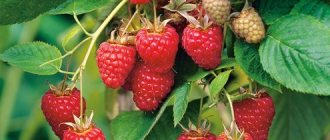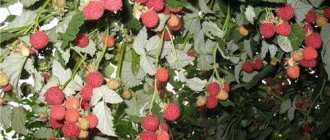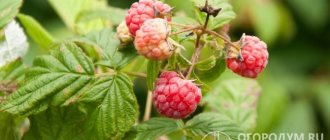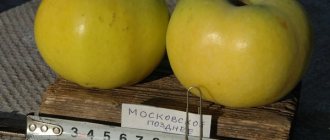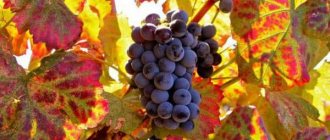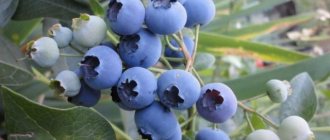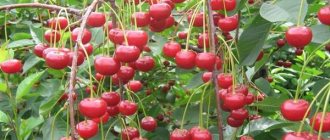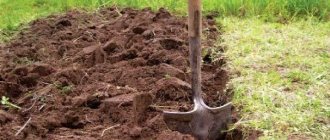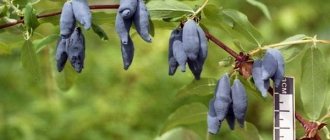History of selection
The Patricia variety was bred by a Russian selector in 1992 - V.V. Kichin obtained it by crossing the Maroseyka variety with the donor M102. Patricia immediately attracted the attention of gardeners. It has been on sale since 1992 and is still very popular to this day.
Did you know? Russia is the world leader in raspberry cultivation. Almost half of all raspberry bushes in the world are located in this country.
Description and characteristics of the variety
Raspberries of this variety are not remontant, therefore, they bear fruit only once a year. This variety is called ordinary. According to the period of ripening, it belongs to the early ones and is considered large-fruited. Patricia has a peculiarity - an unusually long fruiting period. If for most varieties it lasts 1-2 months, then for Patricia this period can last 3 months, and throughout the entire period the fruits do not lose weight and productivity. For this reason, many gardeners try to classify this variety as a remontant variety.
The bushes reach 1.8 meters. Young shoots usually do not have thorns. The leaves are bright green, large, with jagged edges. New leaves may sometimes have a reddish tint. Up to 20 berries are formed on fruit branches. They are large (up to 12 g) with a velvet surface. The shape is truncated-conical, often deformed. The color of the berries is purple, the taste is sweet with a rich aroma.
Regions with a temperate climate are best suited for Patricia. It is adapted for cultivation in Russia.
Raspberry variety Patricia: description with photo
Patricia's bush is tall (1.8 m) and spreading. Each year, 6–10 replacement shoots and up to 8 root shoots grow. The big advantage is that there are no thorns, which makes it easier to care for and harvest. The variety is mid-season, not remontant. The first berries ripen in early July, the main fruiting ends in early August, but a few berries on the bushes can be found later.
Patricia's shoots are thornless, the berries are large and pubescent
The fruits are large, the maximum size is 4–5 cm in length and weighs up to 14 g, there are also small ones - from 4 g. The shape of the berries is unusual, similar to strawberries, this is explained by their tendency to deform; double fruits are often found. Some gardeners consider this a disadvantage, while others consider it a unique feature. The drupes in the berry are firmly attached, the seeds are small. Keeping quality and transportability are average: the berries do not wrinkle when picked, but they do not last long. Good for the market only if collected in the morning and sold by evening. The taste is dessert, with a bright raspberry aroma, rated 4.6 on a five-point scale.
Raspberries are a good antipyretic. Not only the fruits, but also the leaves and twigs have healing properties.
Table: advantages and disadvantages
| Advantages | Flaws |
| Large, interestingly shaped berries, tasty and aromatic | Tendency to deformation of berries |
| Very high productivity, this is one of the highest yielding varieties | Susceptible to late blight, requires prevention |
| No thorns | Gives shoots |
| Ripe berries do not fall off for a long time | Required garter to trellises |
| Without a garter for the winter, it tolerates frosts down to -30 ⁰C | Overripe berries remain on the bushes and are affected by gray rot |
| Resistant to viral diseases, as well as fungal ones: anthracnose, didimella, botrytis |
Landing Features
Any gardener who wants to can cope with growing Patricia raspberries; this process does not require much time and effort. The main thing is to follow the simple rules of agricultural technology, which will be discussed below.
Deadlines
Like most raspberry varieties, Patricia can be planted in both the autumn and spring seasons. In spring, seedlings are planted until new buds sprout. However, autumn planting is considered more favorable . A plant planted before the winter season will be able to gain strength and prepare for fruiting next year. The optimal months would be September-November.
We advise you to learn more about the features of autumn planting raspberries.
Choosing a suitable location
Gardeners who have been growing raspberries for many years are advised to pay attention to the following parameters when choosing a site:
- Light . Raspberries need a lot of light. The peculiarity of Patricia is that its leaves are not afraid of sunburn - therefore, it does not require shading. This plant should be planted in as open an area as possible, with sufficient open sunlight. It is important to pay attention to neighboring buildings; there should be no tall structures near the plantings. It is also worth considering that in the summer seasons large deciduous vegetation appears on trees and shrubs and the area of shading from them will be much larger. Lack of lighting can lead to consequences such as reduced yields and resistance to diseases and pests.
- Humidity . The ideal soil for raspberries should retain moisture, but not allow excess. However, the humidity of not only the soil, but also the air is important. In areas of highlands or steppes where the air is too dry, Patricia bears fruit much worse. It is believed that sufficient rainfall for raspberries will be around 750 mm/year.
- Temperature . For the ripening of berries and good development of shoots, Patricia needs a growing season of 130 days with a temperature above +10°C.
Clay and sandy soils are completely unsuitable for growing raspberries, since they do not retain moisture and such soils require large amounts of fertilizer. Areas where there is stagnant water are also not suitable. The best ones will be:
- sandy loam soil;
- loams;
- fertile black soil.
The soil should be loose, fertilized and well moistened. The acidity level should not exceed 6.5 pH. Before planting raspberries, it is necessary to properly prepare the soil: for this, all debris, excess vegetation and weeds are removed.
Important! Raspberries cannot be grown on one plot for more than 10 years in a row.
The soil needs to be dug up and the plants will feel better if, during soil preparation, the following is added to it:
- fresh manure - 6 kg/m²;
- superphosphate - 60 g/m²;
- potassium - 20 g/m².
This feeding should be carried out 5 months before planting new seedlings. This requires good planning. If the soil has not been prepared in advance, and it is time to plant, then you can add complex garden fertilizers and humus to the soil.
Selection and preparation of planting material
Selecting and purchasing planting material is one of the first and most important steps in growing any crop. In order for the plant to grow healthy, you need to pay attention to the following parameters of the seedling:
- The thickness of the stem should be at least 0.5 cm.
- A sign of a healthy seedling is the presence of green buds.
- The root system should have many roots.
- There should be no signs of rotting or infestation by parasites.
It is also better to purchase seedlings in specialized, trusted stores, rather than in a spontaneous market. As a rule, the nursery always sells healthy plants. Due to this, the price will naturally be higher. The length of the shoot is not particularly important, since it must be pruned before planting.
Before planting seedlings in the soil, it is recommended to soak their root system in a special stimulator - this increases the likelihood of successful establishment of the bushes
Landing algorithm
Raspberries of the Patricia variety are recommended to be grown using the bush method. When planting, the distance between the bushes should be about a meter - at this distance, each bush will be able to receive enough sunlight and air. It is better not to save space, because Patricia bushes have a tendency to grow.
Regardless of the chosen planting method (beds, trenches, etc.), the planting steps will be as follows:
- Dig a hole in the soil. It should be made shallow, because raspberry roots do not grow in depth, but in breadth.
- Shorten the seedling to 0.3 meters.
- Place it in the hole and straighten the roots. The root collar can be deepened by 2-3 cm.
- Sprinkle the remaining space with soil mixture and lightly compact it.
- Plants need to be watered abundantly; It is also advisable to mulch them so that the moisture does not evaporate.
Advantages
Let's briefly go through the advantages of the Patricia variety:
- Excellent resistance to temperature contrasts and frost. The variety is not afraid of frosts even at -34 degrees.
- The yield level is 2-3 times higher than many analogues.
- The taste of the berries: the “giants” varieties lose their taste, but this does not apply to the Patricia variety at all.
- Minimum number of seeds in berries.
- Large berries are easier to pick.
- Resistance to most classical diseases.
|
|
Care
The Patricia raspberry variety is especially good because it does not require complex care. This is a great advantage for growing raspberries on an industrial scale over hectares of territory. Patricia does not need to be covered with earth, the creation of structures and conditions for insulation, but certain care is still necessary. It includes:
- Trimming . Pruning is carried out in autumn, spring and summer. It involves removing fruit-bearing shoots, as well as excess growth and weeds. It is necessary to trim the shoots at the root so that they do not leave stumps. It is better to leave up to five strong shoots on one bush. When pruning, you should use special garden shears or pruning shears.
- Fertilizer . For good development of the bushes, they require three feedings per season. The first is carried out at the end of March; for this feeding it is advisable to use fertilizers containing the main substances necessary for raspberries - potassium, phosphorus and nitrogen. One matchbox of this fertilizer is applied per 1 m² of planting area. The second feeding is carried out before the flowering period. It is recommended to use superphosphate and potassium sulfate in a ratio of 5 tbsp. l. for 10 liters of water. The last feeding is necessary after pruning the plant in the fall, so that it regains its strength. The fertilizer used is the same as before flowering.
- Watering. It is better to pour water under a bush or into a trench - it is not recommended that moisture get on the leaves. The soil under the plant should always be slightly moist. Typically, 8 liters of water are enough for 1 m² of Patricia’s plantings. Watering should be increased in dry and hot weather.
To check the soil moisture level, you can take a lump of earth in your palm from a depth of 15 cm. If it doesn’t fall apart, then you don’t need to water the plants yet.
Recommendations for cultivation
It is recommended to purchase seedlings from specialized nurseries. Only high-quality varietal seedlings guarantee a healthy, strong and high-yielding plant.
Raspberries of the Patricia variety must be cultivated according to the recommended technology for growing berry bushes. It can be planted in holes or trenches.
The process of planting the Patricia variety
When planting, be sure to include:
- humus or compost,
- granulated superphosphate,
- potassium sulfate or wood ash.
Dig a hole of the required depth. Its dimensions are selected individually for the root system of the bush.
The seedling is carefully laid on the bottom, straightening the roots. They should not be enclosed or bent under any circumstances. The root collar is deepened by about 2 or 3 centimeters.
Then the seedling is covered with soil and compacted a little. There is no need to trample down the soil too much; it should remain loose.
A hole is made around the bush, into which at least 7 liters of clean water are poured.
After this, the soil can be mulched and kept moist until young shoots appear.
Harvesting and storage
Raspberries are harvested as they ripen. There is no need to rush too much; Patricia’s fruits hold firmly on their stalks. Here are some tips on how to properly harvest:
- Collection should be carried out in dry weather without precipitation. Humidity on fruits can cause mold to appear.
- The use of gloves is mandatory.
- Sorting should take place immediately during harvesting, since it does not tolerate overcrowding later.
- Berries should be placed in baskets or boxes so that the number of layers does not exceed five.
Preparing for winter
Due to its uniquely high frost resistance, Patricia does not need shelter for the winter. However, they may still be required in the following cases:
- a sharp and strong decrease in temperature;
- icing;
- gusts of cold wind;
- insufficient snow.
We recommend reading in more detail on how to prepare raspberries for winter.
In these cases, agrofibre or roofing felt can be used as cover. It is also useful to mulch raspberries for the winter. Mulching involves covering the soil of plants with organic materials; they can be hay, pine needles, foliage, humus, etc. Such a layer of organic matter will protect the plant from drying out and limit access to insects. The recommended thickness of the mulch layer is 15 cm.
Reproduction methods
By growing Patricia raspberry bushes, you can safely count on the expansion of your raspberry garden. These bushes grow quickly, and different methods of propagation suit them. The best method has proven itself to be by dividing the bush or by regrown cuttings .
Did you know? Raspberries contain copper, so they are recommended for people suffering from depression.
The cutting method is now the most popular - it is believed that it can preserve all varietal properties. To do this, you need to cut off the cuttings from the green root shoots. The cutting is placed in a stimulating solution until roots begin to form.
Raspberries have good adaptive qualities. It is better to carry out propagation in the spring, so the cuttings will take root better and will be easier to tolerate low temperatures. If you propagate a plant in the fall, there is a risk that young plants will die from the cold
Characteristic
Patricia is an ordinary raspberry that bears fruit once a season. It is characterized by its extended growing season. The berries ripen in June-August. Raspberries can boast of their large fruits, excellent yield and exceptional taste.
The plant is spreading, tall, up to 2 meters. Up to ten replacement shoots and about 6 offspring mature annually. Young branches are erect, there are no thorns. There is a characteristic waxy coating on the shoots.
The leaves are bright green in color, quite large, covered with wrinkles. Young leaves have a reddish tint.
The berries are large and conical. The average weight of a mature fruit is 4-7 grams. There are specimens weighing 12 grams. The drupes are tightly planted, so they do not crumble when separated from the stalk.
The berry does not always maintain the correct shape and is often deformed.
The plant shows good winter-hardy qualities. Patricia feels great even at temperatures of -30 degrees Celsius. If the temperature drops below -30C, then simply bend the shoots and dip them in the snow.
It is also worth highlighting the high yield of the variety. On average, about 5 kg of berries are harvested from one bush. In ideal growing conditions and with high-quality agricultural technology, you can achieve a result of 7-8 kg per bush.
The first two years it does not bear fruit at full strength. Therefore, it is not worth assessing the quality of Patricia’s yield at such a young age. Peak yield comes in the third year.
She has a rather weak immune system, which is a significant disadvantage. Also, according to many gardeners, it is quite difficult to transport berries over long distances.
Reviews from netizens
The berries have a really excellent taste, very aromatic. ))) The good news is that there are no thorns, it’s more pleasant to collect. Ripens in my region from June 25th. For some reason, the largest berries acquire a non-standard shape, become deformed, twisted, and you often come across double berries - these are the first harvests, followed by normal standard berries. The color of the berry is light red. The berries themselves are very attractive and are in demand on the market... Timely and COMPLETE harvesting of the berries is important, because when there are overripe berries left (especially in rainy weather like this summer), I noticed rot on the berries, with lesions on the neighboring ones in the bush... I do not use chemicals ... In general, the impressions from 5 years of cultivation are very positive, apart from minor nuances ...
Arik
https://forum.vinograd.info/showpost.php?p=298205&postcount=8

